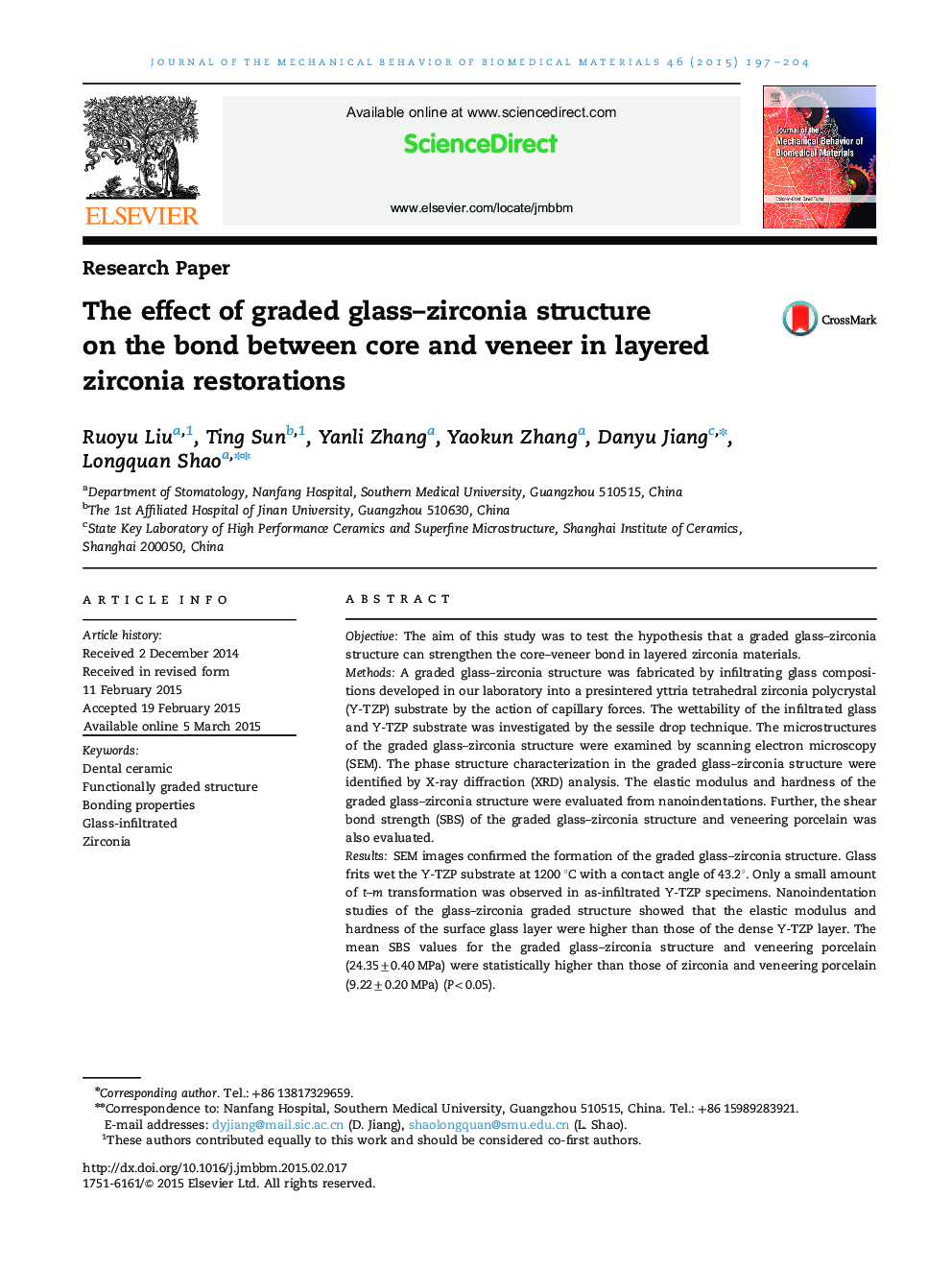| Article ID | Journal | Published Year | Pages | File Type |
|---|---|---|---|---|
| 810631 | Journal of the Mechanical Behavior of Biomedical Materials | 2015 | 8 Pages |
ObjectiveThe aim of this study was to test the hypothesis that a graded glass–zirconia structure can strengthen the core–veneer bond in layered zirconia materials.MethodsA graded glass–zirconia structure was fabricated by infiltrating glass compositions developed in our laboratory into a presintered yttria tetrahedral zirconia polycrystal (Y-TZP) substrate by the action of capillary forces. The wettability of the infiltrated glass and Y-TZP substrate was investigated by the sessile drop technique. The microstructures of the graded glass–zirconia structure were examined by scanning electron microscopy (SEM). The phase structure characterization in the graded glass–zirconia structure were identified by X-ray diffraction (XRD) analysis. The elastic modulus and hardness of the graded glass–zirconia structure were evaluated from nanoindentations. Further, the shear bond strength (SBS) of the graded glass–zirconia structure and veneering porcelain was also evaluated.ResultsSEM images confirmed the formation of the graded glass–zirconia structure. Glass frits wet the Y-TZP substrate at 1200 °C with a contact angle of 43.2°. Only a small amount of t–m transformation was observed in as-infiltrated Y-TZP specimens. Nanoindentation studies of the glass–zirconia graded structure showed that the elastic modulus and hardness of the surface glass layer were higher than those of the dense Y-TZP layer. The mean SBS values for the graded glass–zirconia structure and veneering porcelain (24.35±0.40 MPa) were statistically higher than those of zirconia and veneering porcelain (9.22±0.20 MPa) (P<0.05).ConclusionsA graded glass–zirconia structure can be fabricated by the glass infiltration/densification technique, and this structure exhibits a strong core–veneer bond.
